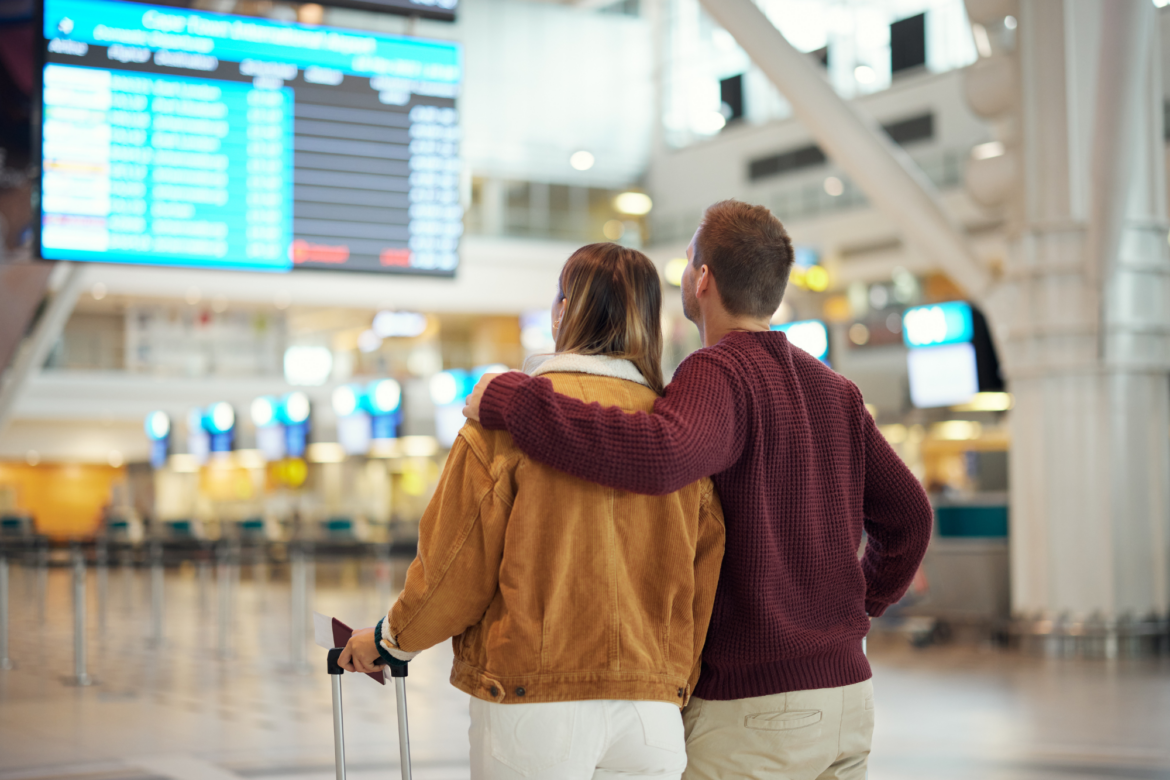Top Tips for Travel Days from a Physical Therapist
As the Wisconsin winter months approach us, many are eager to travel to warmer areas to avoid frigid temperatures and runny noses. Most of us have figured out how to book a flight, plan a road trip, and arrive at our destinations, but education on how to avoid challenges with travel is rarely discussed. This blog will educate individuals on how to minimize the onset of pain, dehydration, illness, and jet lag affiliated with prolonged bouts of travel. Here are the top tips for travel days from a Physical Therapist.
Preparation is Key
First things first, preparation for the days of travel will set you up for success. To minimize stress, ensure you arrive early at the airport (2 hours for domestic and 3 hours for international) to be flexible and allow for adaptations to unwarranted events. It is equally important to invest in quality footwear that allows for comfortable weight-bearing for long periods. All feet are unique depending on size, arch formation, and rigidness. Find a licensed physical therapist to recommend the right shoe for you that allows you to hike and stand as your vacation demands, and of course, avoid packing a pair of heels when walking along the cobblestone streets of Italy to minimize ankle sprains and plantar fasciitis.
The Plane
During travel, ergonomics within an uncomfortable plane seat can be the difference between a stiff and mobile spine. Personal items such as cervical pillows can be utilized to keep your neck in a neutral position when sleeping. A lumbar roll can also be used to promote proper alignment of the lower back. Elbows should rest on armrests as feet are best positioned flat on the floor. Modern seats provide device clips that can hold a tablet or phone at eye level to avoid forward-flexed positioning when watching a movie or series of shows. Also, when initially getting situated do not feel afraid to ask for help to lift your heavy carry-on luggage into the overhead bin. As important as proper seat ergonomics, exercise during long periods of travel is equally vital.
Movement During the Day
Exercises and stretches can be performed during travel to minimize the onset of ailments and pains caused by sitting. A series of lower extremity and neck stretches to keep muscles of the spine relaxed can easily be performed once seated. Specific stretches for the neck include gently bringing one’s ear to the same shoulder to target the upper trap. A towel can also be used to wrap around the back of the head to facilitate active-assisted rotation, better known as SNAGs. Stretches that minimize lower back tightness include a seated hamstring stretch by extending one’s knee and hinging forward at the hip to generate the pull along the back of the thigh.
Travelers can also place one foot on the opposite knee, sit up tall, and push the crossed leg to the floor to stretch the piriformis. Finally, a knee hug can elongate glute fibers and take stress off of the back. Each stretch should be performed for 30 seconds to gain benefit from each position held. As for exercises to perform, isometrics are ways to contract muscles to facilitate blood flow and postural muscle activity. These include pumping the ankles, clenching your butt muscles, squeezing shoulder blades and chin tucks. Hold each repetition for 5 seconds and perform 10-20 repetitions depending on difficulty. Finally, learning to perform a posterior pelvic tilt in a seated position to engage one’s transverse abdominus muscle will facilitate proper positioning of the lumbar spine.
Other Travel Tips
Other key points that can help avoid strains and pains include parking one’s car every 2 hours or standing up from your plane seat and ambulating to encourage blood flow and digestion. As for hydration, it is suggested to pack an empty water bottle in one’s carry-on to ensure sufficient amounts of fluids can be consumed during travel to avoid dehydration. “50% of the air circulating in the cabin is pulled from the outside, and at high altitudes, the air is almost completely devoid of moisture. This might cause your throat, nose, and skin to feel dry”. Jet lag seems unavoidable, but adjusting one’s circadian rhythm before travel may minimize fatigue, lethargy, and stomach issues.
Sleep Tips for Travel
Preparation should begin days before when adjusting one’s sleep schedule. “When flying west, calculate the number of time zones being crossed and sleep 1 hour earlier each day (i.e. if traveling 2 zones, 2 days before travel, sleep 1 hour earlier than normal, then 2 hours earlier the day before travel). This parameter can be inversely calculated when traveling east and sleeping hours later. Sunlight exposure can also be managed depending on flying west or east to calibrate one’s internal clock. For westbound flights, try to optimize natural sunlight exposure in the evening and minimize sunlight in the morning (recommend the inverse for flying east).
Other behavioral modifications to consider include avoiding long-duration exercise and switching to moderate intensity for 30-60 min 3-4 days prior and avoiding exercising within 1 hour of sleep. Avoid alcohol consumption and caffeine intake 6 hours before bedtime to avoid jet lag symptoms”. Last, make sure to practice sanitization during days of travel. Wipe down tray tables and armrests, use hand sanitizer, and wear a mask if you are feeling unwell to minimize germ transmission within the crowded cabin.
Utilize these recommendations to ensure you avoid pain, aches, jet lag, and the spread of disease. If you are experiencing a specific complaint, contact Freedom Physical Therapy Services to provide a personalized home exercise program. Use these top tips for travel days from a Physical Therapist to enjoy your FREEDOM to travel.


Great tips! The article offers practical advice on how to stay comfortable and avoid strain during travel. It’s a helpful resource for anyone looking to take care of their body while on the go.